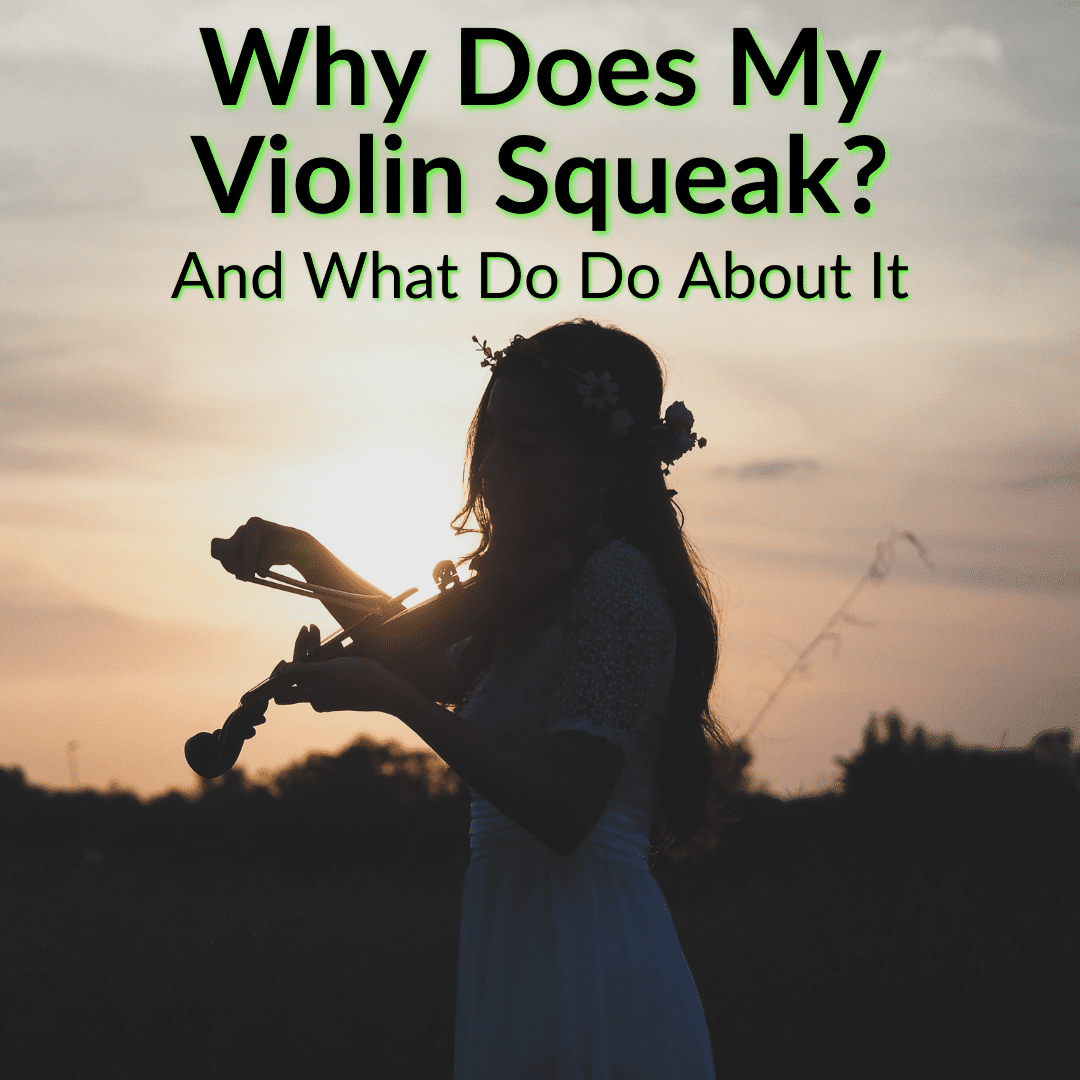 It takes years to become proficient on the violin.
It takes years to become proficient on the violin.
In the early stages, it can be difficult to get a clean tone on the instrument.
One potential issue is squeaking.
There are a number of things that can cause a violin to sound squeaky.
And it’s not always your fault.
Keep reading to learn what can cause a squeaky violin, how to figure out what is causing yours to squeak, and what you need to do to fix it.
Table of Contents
Why Does My Violin Squeak?
A squeaking sound while playing the violin can come from various reasons, such as incorrect technique, too much pressure, malfunctioning of the parts, etc.
The good news is that a squeaky violin is usually easy to fix. But first you need to figure out what is causing the issue.
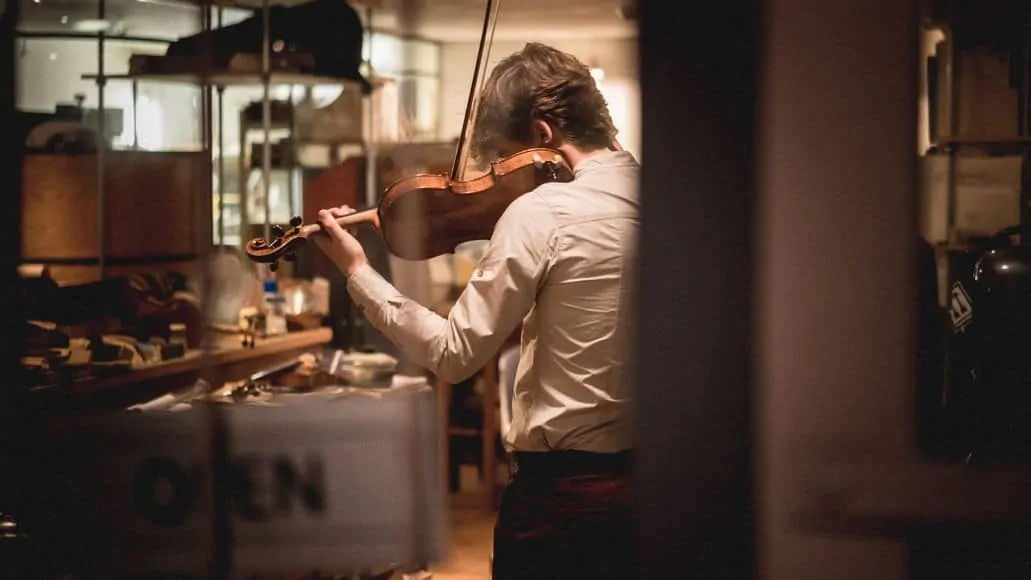
It could be you, your instrument, or the bow.
The easiest way to determine which of the three is the culprit is to try playing a different violin, and also playing both violins with two different bows.
- If you hear squeaking no matter which instrument and bow you use, the issue is with your technique.
- If you hear squeaking with only one instrument, no matter the bow you use, the issue is with the violin.
- And if you hear it with only a particular bow, no matter which instrument you use with the bow, then the bow is at fault.
Once you know what is causing the squeaking, keep reading below. We will cover some of the most common reasons for a squeaky violin, along with ways to fix the issues.
Squeaking Due To Technique
Perhaps the most common reason for a violin squeaking is improper playing technique. But there’s not one single problem that’s always at fault. It can be one of several issues.
Bow Pressure
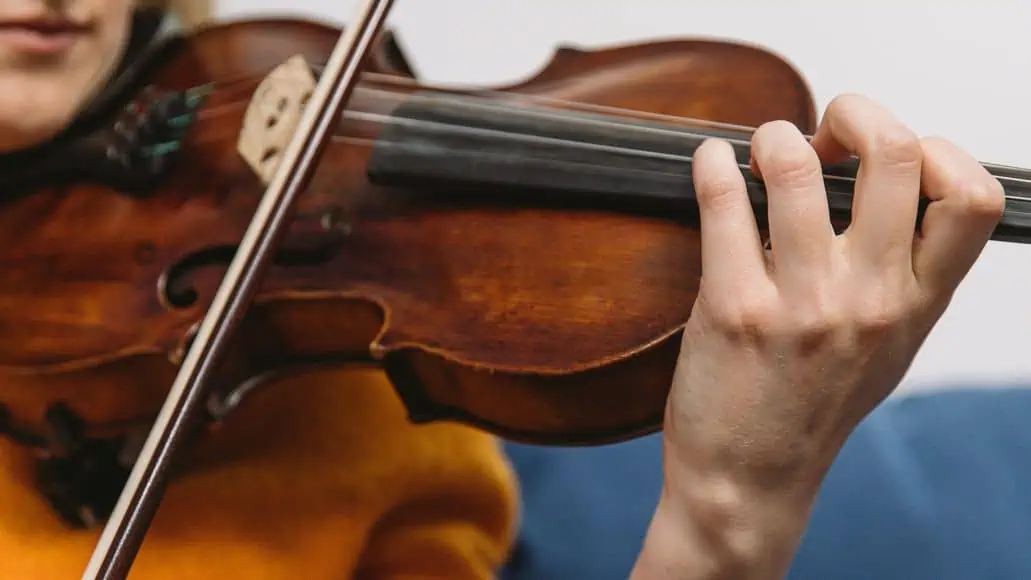
If you press the bow against the strings too hard as you play, it prevents the strings from vibrating evenly. On the other hand, not pressing hard enough produces the same effect.
You need to find a balance between making enough noise and pressing too hard. If you apply too much pressure, the violin will make a rough, scratchy sound.
Bow Position
You will need to move the bow evenly across the strings, traversing the strings horizontally and not up and down. Try to keep the movement of the bow parallel to the bridge at all times.
The bow should only touch one string at a time. If it comes into contact with others, it will also create sounds. That said, sometimes you might want to double stop on the violin, in which case you need to touch more than one string.
Finger Pressure
When playing a note, you should press your fingers firmly on the strings. If you don’t press hard enough, the string will vibrate past your finger, producing a high-pitched noise. If you do this at the right places, you’ll produce a harmonic. At any other point, you’ll just produce an off-pitch screech.
Squeaking Due To The Violin
A squeaking noise is not always a matter of poor technique. Sometimes it’s just a problem with the instrument itself. Even the greatest violins on earth can suffer from these issues.
Not Enough Rosin
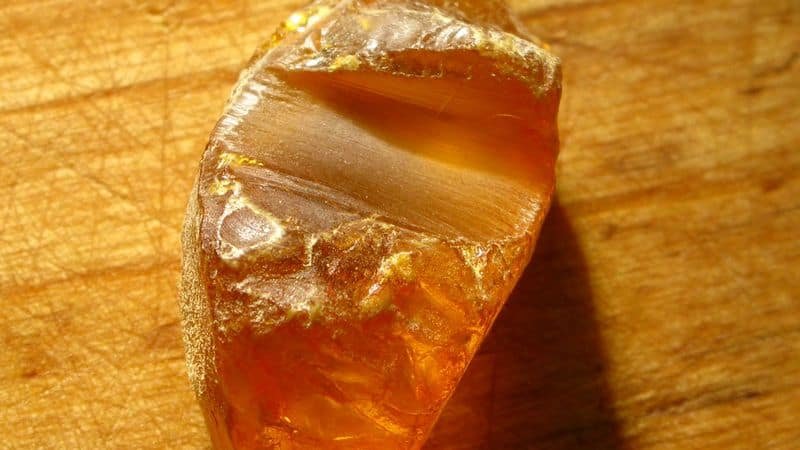
These vibrations are transmitted to the bridge which transmits them to the soundboard and so on. Without pitch, no sound is emitted, or the sound is almost nonexistent.
If you feel that your bow’s hair isn’t gripping well enough, rub rosin on it. Apply some pressure when rubbing rosin on the hair of your bow and make sure you have good quality rosin.
Even the best bows will not sound good without sufficient rosin. So whether you have a $1000 bow or simply the best violin bow for beginners, make sure you get some quality rosin to put on it.
Worn-Out Strings
Has it been a long time since you changed your strings? you should be changing them regularly. The strings oxidize or become too flexible over time, which has negative effects on the sound.
It is necessary to change the strings on your violin at least once a year, depending on the frequency, duration of use, and the acidity of the sweat on your fingers. Indeed, all these factors influence the aging of the strings and reduce their useful life.
For example, finger sweat with a a high acidity can mean you need to change your strings every six months, if you tend to practice in short, infrequent sessions.
What material the strings are made from also affects how long they last. Some materials simply last longer than others.
Checking often that your strings are in good condition will definitely improve your sound! You should also make sure to buy the best violin strings you can afford.
Improper Bridge Position
If you have ruled out the string hypothesis and you have rubbed the horsehair of the bow with sufficient rosin, you should take a look at the violin itself. The first point to check is the bridge.
The bridge is a piece of wood that you adjust by hand. It is positioned between the soundboard and the strings and is held by the pressure of the latter without any fixation.
The bridge has two functions. It serves to keep the strings at the proper height and to transmit their vibrations.
If the bridge placement is incorrect or if it is crooked, you will not get optimal transmission and your instrument will sound off.
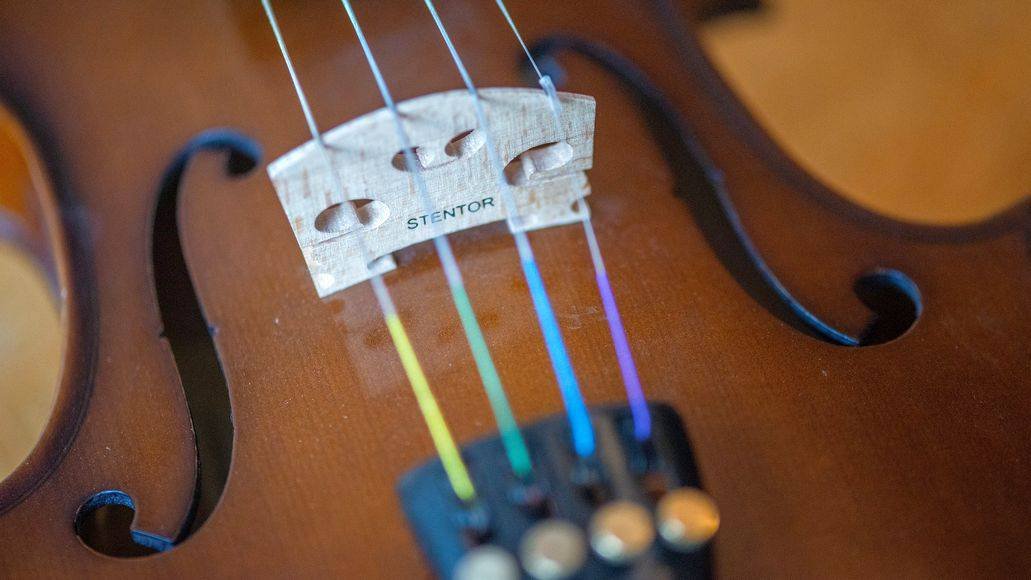
Correct Bridge Position
The proper position of your bridge is as follows: if you hold your violin with the soundboard facing you, the bridge should be in front of the two F notches.
If you also look at your violin in profile, i.e. with the ribs in front, the bridge should be perpendicular to the board with a very slight backward tilt.
Is your bridge not in the correct position?
If you have the necessary confidence, you can reposition it. In order not to cause damage to the violin, it is a good idea to slightly loosen the strings to facilitate the operation.
Be especially careful to find the precise position so as not to cause more serious damage. If you do not feel capable of carrying out the operation, you can have a luthier do it for you.
Bridge Shape
Your bridge should not show any deformations. If the bridge is crooked, you should go to a professional.
The Foot Of The Bridge
If your bridge is correctly positioned, you should also check that the feet of the bridge fit perfectly with the base of the violin to transmit the vibrations as well as possible. If not, you will have to have them adjusted.
Take special care with the position of the bridge since the base does not have a regular shape. It can happen that the feet do not fit well to the base due to a change in position.
Fractures
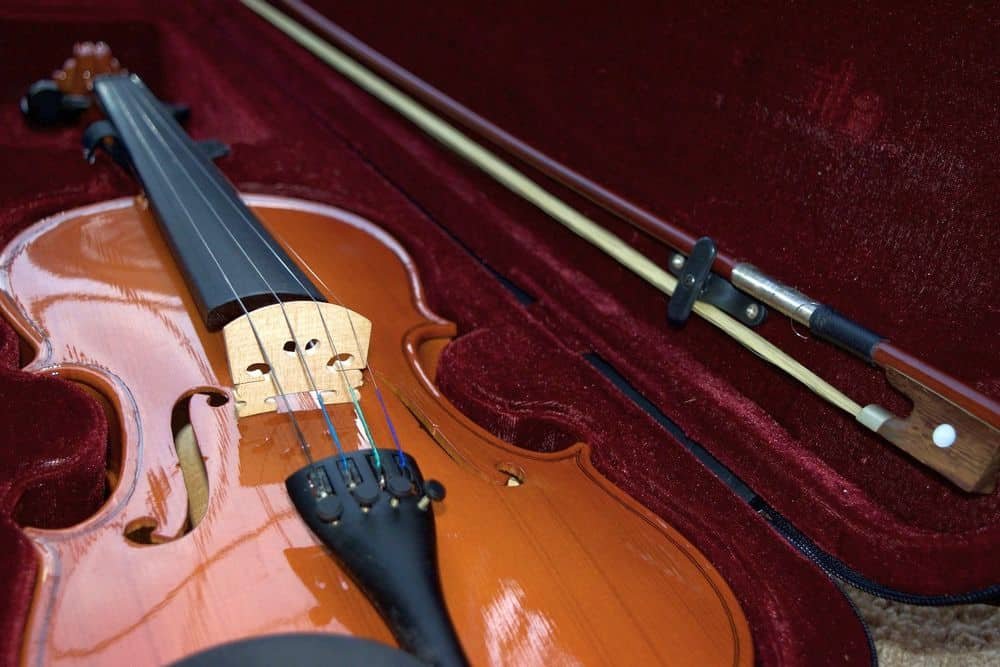
If you have already checked all the above points and the sound of your violin still seems squeaky, it may be because the soundboard of your violin has one or several fractures.
This case is the most burdensome since it involves the need for systematic intervention of a professional. Note that this issue is not a concern if you use an electric violin, since they do not produce sound due to body vibration.
The fissures cause sound distortion and you will probably be able to detect the most obvious ones by gently hitting/tapping the violin like you would knock on a door (but very gently). If you hear a noticeably different sound in one particular place, your violin probably has a crack.
In this case, you will have to take it to a luthier to assess the severity of the cracks and repair them. If your violin does not present any cracks, that’s great. Keep taking good care of it, so that it never forms cracks.
Squeaking Violin: Final Thoughts
Hopefully one of the above tips helped fix the squeaking. If not, it is time to seek professional help.
If you only hear the squeaks when playing a particular violin, have a luthier inspect your instrument to see if there is anything wrong with it.
If you hear squeaking with any violin and with different bows with different bow materials and construction, the issue is your playing. If you can’t fix it on your own, find a violin teacher to help you out.
Very informative.
Thank you.